Five Common PWC Ownership Mistakes

Avoid these potentially costly errors
We all make mistakes. Some of us more than others (we know who we are). And, especially in those first few months of owning a personal watercraft, we make a lot of them. For the most part they’re simple. Unfortunately, even these simplest of errors can have lasting repercussions.
Want to avoid the new-owner follies? Pay close attention to the following…
Not Installing the Drain Plug Before Launching
Seriously, we have to be reminded of this? Sadly, yes. Even the most experienced riders have probably done it once over the years. We back our trailers in, start up the boat and then begin to motor away, only to (hopefully) remember we’ve left a hole down there. Suddenly we’re racing back to the ramp, or trying to find the nearest beach, panicked that we’re taking on water.
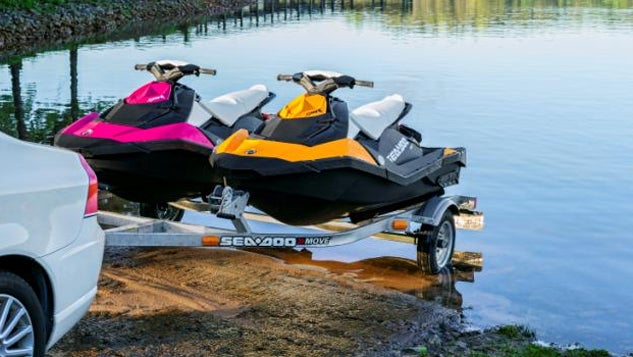 Before you put your PWC in the water, make sure you’re drain plug is in place. It’s an easy thing to forget.
Before you put your PWC in the water, make sure you’re drain plug is in place. It’s an easy thing to forget.Suggestion? Don’t panic. In fact, if you do forget and the water and air are warm, you don’t even need the return trip to the ramp or beach if your plug is the type with a tether. Just hop in, carefully feel for the plug, and carefully thread it back into position. If you can’t feel it, don’t risk cross-threading the plug in your haste. This is the time to get back to that ramp or beach so that you can see what you’re doing.
Why remove the plug in the first place? Even the tightest engine compartments take on water. Left undrained, it will lead to condensation, corrosion, and all sorts of problems. Remember, after every ride pull the plug…and before every ride, put it back in.
And double-check, just to make sure, every single time before you launch.
Not Using the Safety Lanyard
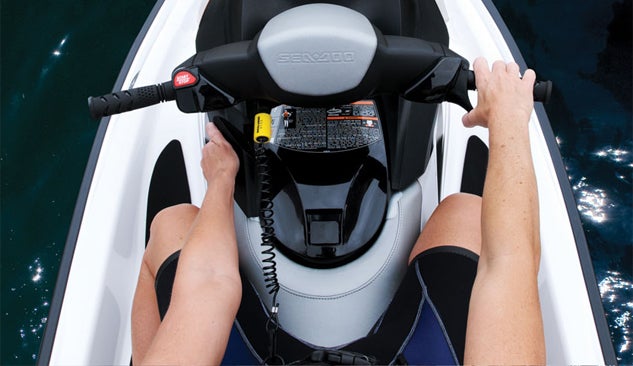 Always attach the safety lanyard to your wrist or your PFD to avoid a potentially serious problem if you fall off the craft.
Always attach the safety lanyard to your wrist or your PFD to avoid a potentially serious problem if you fall off the craft.I was once reporting on a race and watched as a rider was knocked off his PWC, and then said ski continued on nearly full speed with a mind of its own. The rider in question wasn’t wearing his safety lanyard, and as a result his craft became a missile ultimately headed back to the beach.
Don’t go anywhere without first securing the lanyard to your wrist or lifejacket. It’s the only thing that ensures your craft will stop should you unexpectedly leave the premises. And when you’re leaving your craft unattended for any period of time, remove that lanyard and take it with you. That way you avoid everything from a curious hand accidentally starting your craft on dry land, to an opportunistic thief.
Starting In Shallow Water
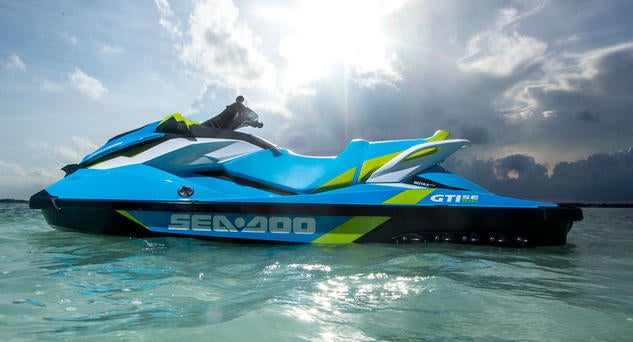 Making sure you’ve got at least two feet of water underneath your craft before starting it will save you some costly and time-consuming repairs.
Making sure you’ve got at least two feet of water underneath your craft before starting it will save you some costly and time-consuming repairs.We all know one of the cool features of PWC is that they don’t have an exposed prop, and can run in relatively shallow waters. That doesn’t mean, however, that you should start one up at the water’s edge. Once a PWC engine comes to life and that impeller starts to spin, water is getting sucked into the pump. And when you’re too shallow, that powerful suction can include sand, small rocks and pebbles, and anything else lurking on the bottom. The problem gets worse when you hop aboard, drop the craft lower in the water due to your added weight, and then gun the throttle.
Most manufacturers recommend starting in no less than 2’ of water. That means 2’ under the intake grate, not 2’ total. If you don’t want to get wet, push your craft out to deeper water as you hop aboard, and then start it.
A good habit is to also lift the stern of your craft up and down several times to “flush” the pump area after you pull it off the beach to remove any sand that may have collected within.
Incorrect Engine Flushing
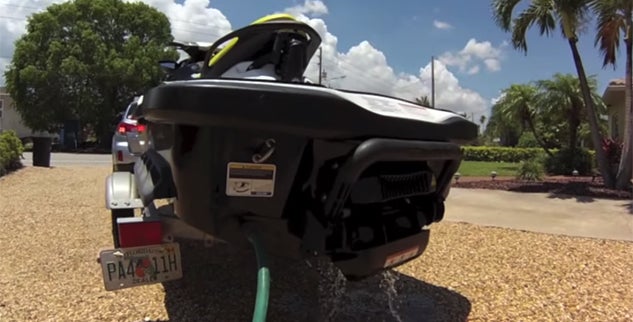 Properly flushing your engine, especially after riding in salt water, will keep corrosion at bay.
Properly flushing your engine, especially after riding in salt water, will keep corrosion at bay.Flushing is a must in saltwater, and not a bad idea to occasionally do even in freshwater. It removes all sorts of grit, sand, and impurities that may be left in your engine’s cooling passages after a ride, and prolongs the life of your engine.
Flushing, however, can do more harm than good when you don’t follow the correct steps in order. Water can back flow into the engine and cause serious damage.
Always hook up your flush hose first, without water. Then, start the engine before finally turning on the water supply as the final step. From there, individual manufacturers suggest different practices, from revving the engine partway to letting the engine run at idle for several minutes. Check your owner’s manual to ensure you follow the recommended guidelines, but in general an occasional rev or two will ensure the fresh water makes it into most every nook and cranny of your cooling system.
When your time is up, always reverse the order — shut off the water supply first, then rev the engine several times to push out the remaining water before shutting down your craft.
Not Taking Care at the Dock
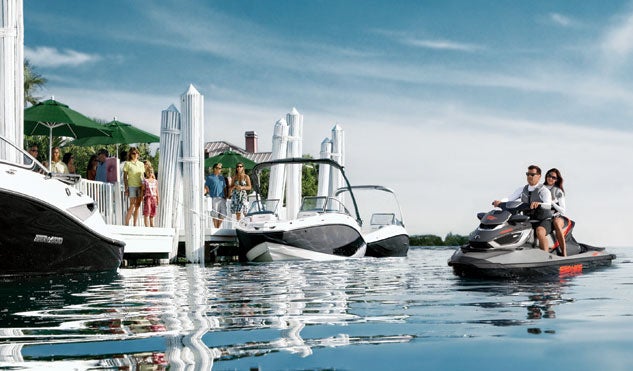 Tying a PWC to a dock requires extra care to avoid damage.
Tying a PWC to a dock requires extra care to avoid damage.It’s fun to go to a friend’s dock, or stop off at that waterside restaurant, but ask a PWC owner about their first scratch or ding and odds are good it came from, you guessed it, a dock.
The reason is simply that PWC just weren’t made to tie up nicely at most docks. For starters, they’re low profile. Instead of bumping up against a dock like a boat with a larger, taller hullside, they often slip underneath it, where things like paint and graphic scratches, seat tears and mirror damage frequently happens. They also typically don’t have convenient tie-downs, forcing you to rig up something with the handlebars, bow and stern eyes or rear grab handle. Even when tied, the shape and size of the craft doesn’t lead to convenient use of standard boat fenders or dock rub rails. The result is often scratches from jagged boards, nails, bolts, or even barnacles on dock pilings.
There’s no easy solution. Aftermarket pop-up cleats are available if you’re willing to drill a few holes in your boat. Several manufacturers also offer cleats or tiedowns on some craft, or as accessory purchases. PWC-specific fenders are also available that more closely conform to the craft’s unique shape and stay anchored securely, although they still do little to keep a craft from slipping under a taller dock.
Whatever you choose, perhaps the best defense is simply to take your time when securing your craft, and no matter how fendered, bumpered, or protected, think about how the wind or tide will affect its position after you leave it unattended. Then think about what will happen should a passing boat kick up a sizable wake. In some cases it may be better to beach your craft if possible. If you must leave it dockside, consider running several lines to hold it off the dock as best you can.
We are committed to finding, researching, and recommending the best products. We earn commissions from purchases you make using the retail links in our product reviews. Learn more about how this works.
Get PersonalWatercraft.com in your Inbox!
Like PersonalWatercraft.com on Facebook
Comments
Most Popular

2025 Yamaha JetBlaster PRO 2-Up Review

2024 Kawasaki Jet Ski STX 160X Review

Remembering the Sea-Doo XP

Whatever Happened to the Wetbike?

2025 Yamaha JetBlaster Review





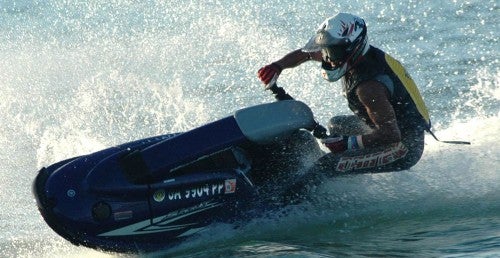






 Your Privacy Choices
Your Privacy Choices